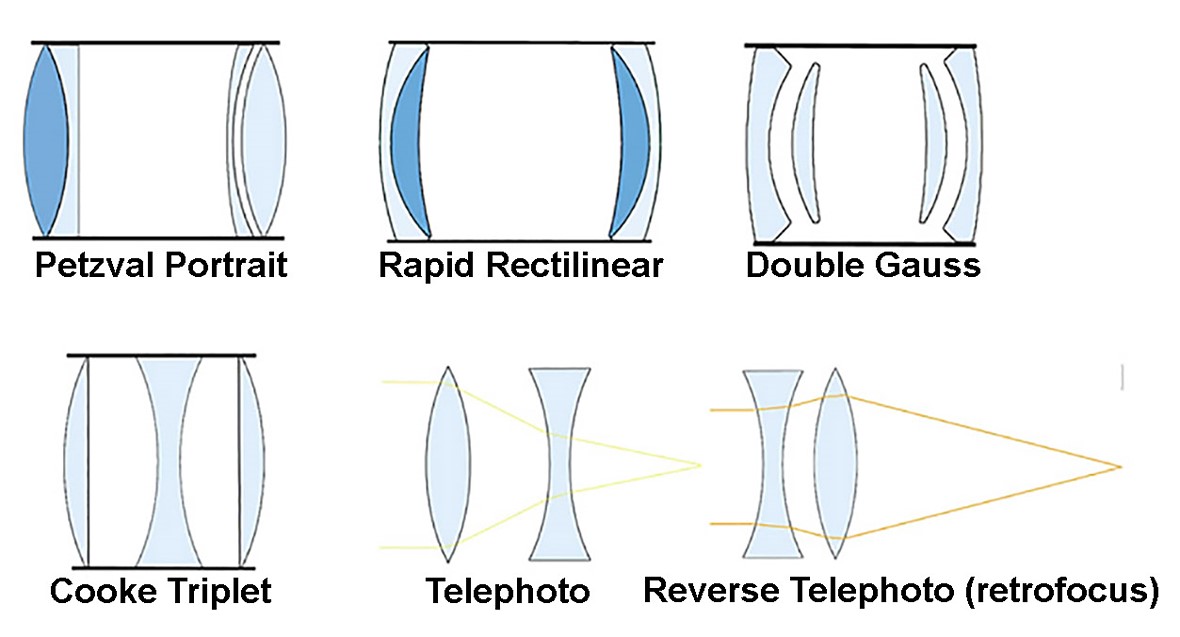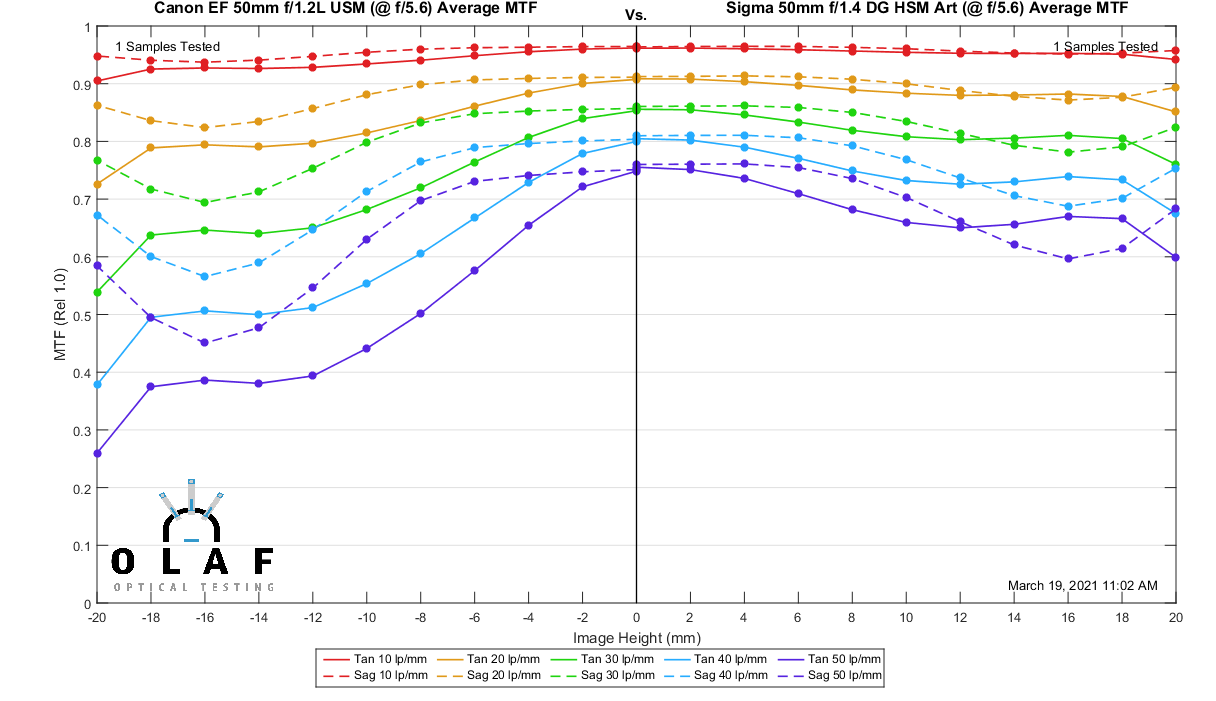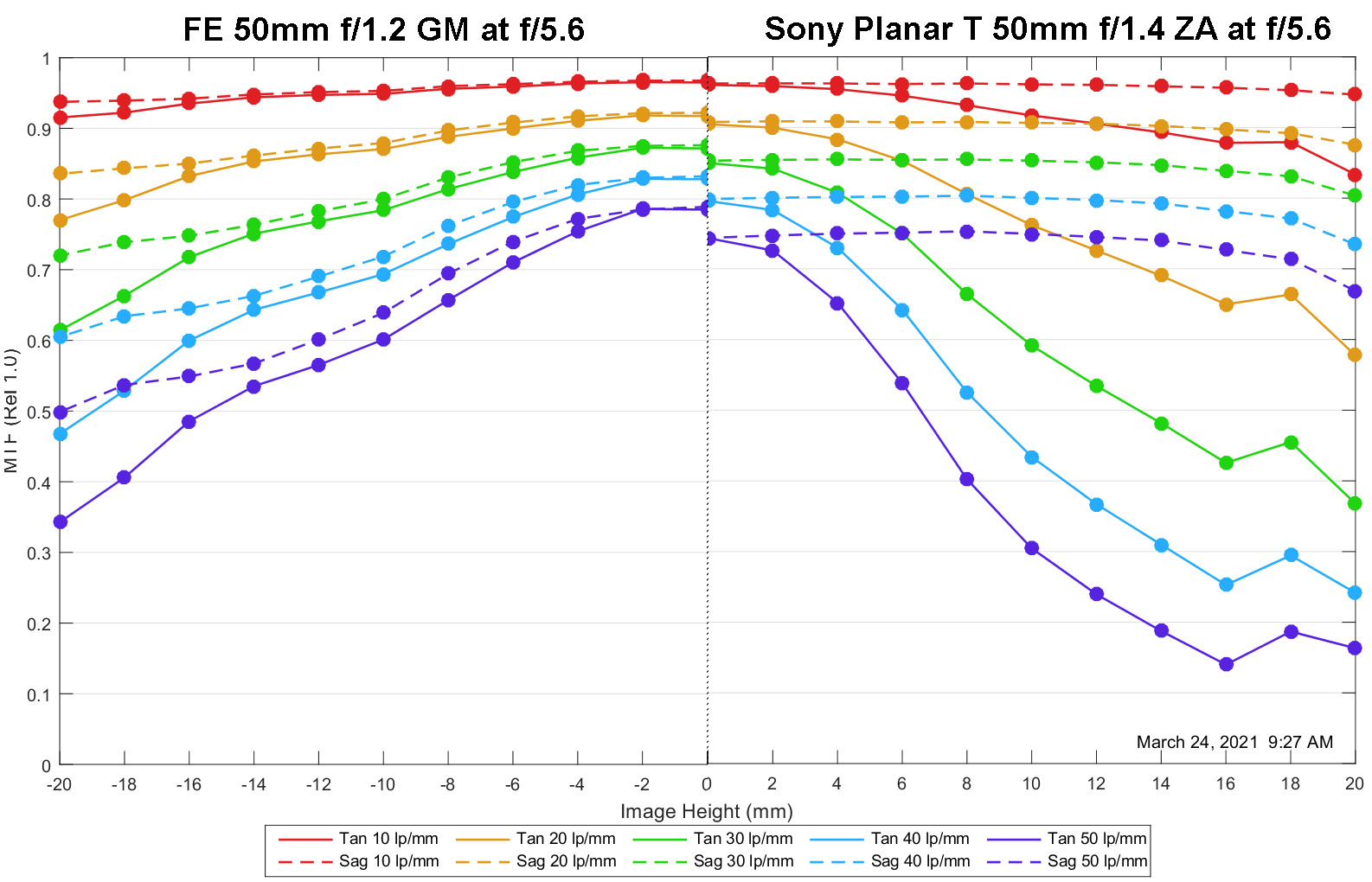
Lenses like the Nikon Z 50mm F1.2 S are larger, heavier, more expensive and more complex than older F1.2 lenses. But why?
First, a little history of optics
In the days when ships were built from wood, people already had reliable optical instruments. One of these tools was a fixed focal length lens made according to the "double Gaussian lens" design. Before the early twentieth century, lens designers had already created five of the six types of lenses that form the basis for those we use today. (The retrofocus lens dates back to the 1920s, and zoom lenses, if you're curious, are essentially modified Cook triplets.)
Since the late 19th century, a double Gaussian lens has been the main design for high-aperture fixed focal length lenses. Over the years, designers have added new groups to get more light, correct aberrations, and improve lenses in general. But until modern times, the foundation for fixed focal length lenses has remained the "double Gauss". Think of any known prime lens and it will most likely be made in a "double Gauss" design: Speed Panchro, Planar, Xenon, Summicron, Takumar, Ultron, and so on.

Above: Petzval lens, aplanat, double Gaussian lens. Bottom: Cook's triplet, telephoto lens, reverse telephoto lens (retrofocus).

Most double Gaussian schemes have features that are of practical importance (note that I said most , not all). The easiest design is to design a dual Gaussian lens with an angle of view equivalent to the 40-60mm focal length of full-frame cameras. Therefore, the 50mm sphere is usually dominated by dual Gaussian lenses, and lenses with larger or smaller focal lengths usually become telephoto or retrofocus lenses. Second, aberrations in dual Gaussian lenses are easier to control at F2.8 or smaller. A decent 50mm F2.8 dual Gaussian lens can be made with just five elements, while larger apertures require more elements to correct aberrations (see diagram above).
But lenses change
Over the past decade, 50mm lenses have become more sophisticated. Compare the 30-year-old Canon 50mm F1.2 (right) with the newer Sigma 50mm F1.4 Art and Zeiss Otus 55mm F1.4 (left).

Lens diagrams (left to right) Zeiss 55mm Otus, Sigma 50mm F1.4 Art and Canon 50mm EF F1.2L.
Recently, three major manufacturers introduced 50mm F1.2 lenses with an even more sophisticated design, ranging from 13 to 18 elements, with multiple aspherical and ED components. It is quite difficult to see any influence of the Gaussian dual lens circuitry in them.

Lens schemes (left to right): Sony FE 50mm f1.2 GM, Nikkor Z 50mm f1.2 S and Canon RF 50mm f1.2L.
Lens designers aren't adding all this new glass to increase the price and make the circuit look cooler. These newer, more expensive and complex designs are designed to overcome the limitations we faced with 50mm fixed focal length ultra-wide aperture lenses. At least they will solve these problems in theory and my expectations. And we know how expectations usually end.
Let's talk about ultra-wide aperture lenses
Speaking of expectations, for many years, photographers have spent fortunes on F1.2 lenses in the hope that despite the reduced sharpness when the aperture is fully open, at least when the aperture is reduced, they will be as good as cheaper 50mm lenses. After all, reducing the hole can solve all problems, right?
Unfortunately, things did not work that way, at least for dual Gauss lenses with apertures larger than F1.4. Of course, decreasing the relative aperture made them sharper, especially in the center. But far from the center, they were never very clear; rather, they became acceptable. For example, below is a comparison of Canon's classic 50mm EF F1.2L and the newer Sigma 50mm F1.4 Art, tested at F5.6. As you can see, the Sigma beats Canon.

Modulation transfer function (MTF) of Canon 50mm EF 50mm F1.2L (left) and Sigma 50mm F1.4 Art (right) lenses.
The field curvature graph demonstrates that this is not its effect (although some curvature is present). Rather, these lenses have aberrations that have not been greatly reduced by decreasing aperture ratio (third and fifth order astigmatism, elliptical coma, and other high order aberrations are not so well removed with smaller apertures).

These diagrams show that although the aperture is reduced, the outer portions of the lens are not as sharp and there is a high degree of astigmatism.
This was the situation. The $ 1,500 ultra-wide aperture lens produced stunning shots at F1.2, but when the aperture was reduced to F5.6 or F8, the $ 300 F1.8 lens was generally sharper. I used the Canon EF 50mm F1.2L as an example, but essentially the same was true for all ultra-wide (F1.2 or wider) lenses, including the $ 3,000 price tag.
Testing the new Sony FE 50mm F1.2 GM
Sony sent me five new FE 50mm F1.2 GM lenses for preliminary testing . This is incomplete testing because there are only five lenses, but that should be enough to give us some information. Although I have not tested the 50mm Canon and Nikon, their design suggests that the results should be roughly the same.
Fully open hole tests
Compared to the old EF Canon 50mm F1.2, you can see that the last 30 years of lens design have not been in vain. Sony (right) is significantly better.

Canon EF 50mm F1.2L @ F1.2 | Sony FE 50mm F1.2 GM @ F1.2
Here's a metric that gives an idea of how good the Sony is: at F1.2 it has better resolution than the excellent Sigma 50mm F1.4 Art at F1.4.

Sigma 50mm F1.4 Art at F1.4 | Sony FE 50mm F1.2 GM at F1.2
So this is the advantage of the new design: When fully open, it is as good as the excellent 50mm F1.4. This is definitely “worth the money” for many photographers. But I was still curious - how much sharpen does the aperture increase?
Reduced bore comparisons
Let's start with the obvious: let's compare one F1.2 GM lens to one Sony Planar 50mm F1.4 ZA lens, both at F5.6. The ZA is not a terrific lens, but many FE users have worked with it. When the hole is reduced, the MTF diagram below shows its high astigmatism. I expected GM to be better than him; and so it turned out.

Sony FE 50mm F1.2 GM at F5.6 | Sony FE 50mm F1.4 ZA at F5.6
Now let's make a more complex comparison, between one of the GMs and the Sigma 50mm F1.4 Art (I swapped them in the graph with the Sony on the right). There are minor differences, but if you want to say that one is definitely better than the other, then I prefer to remain silent, because you will be mistaken. The Sigma is slightly better at the edges, the Sony is in the center, and the Sony has slightly less astigmatism. But the differences are very minor, to the point that they will be within the sampling deviation, and will be invisible in the photographs.

Sigma 50mm F1.4 Art at F5.6 | Sony FE 50mm F1.2 GM at F5.6
This is exactly what I was hoping to see. Previously, if you bought an F1.2 or wider aperture lens, you'd expect the picture to be out of focus when the aperture is open, and even with a smaller aperture, it won't be as sharp as a cheaper, slower lens. Modern (and more sophisticated) designs allow F1.2 lenses to be stunningly sharp at full aperture and as sharp as lenses with smaller apertures at smaller apertures. And this is, in fact, very important.
Of course, permission isn't everything. This is probably not even the most important thing. But the important thing is that at least F1.2 lenses did not have such indicators until recently.
And hopefully you are now starting to understand why these new lenses are made up of so many elements (although in fact, this is not the only reason).
Advertising
Order and work immediately! Creation of VDS of any configuration within a minute, including servers for storing large amounts of data up to 4000 GB, CEPH storage based on fast NVMe disks from Intel. Epic :)
Join our chat on Telegram .
